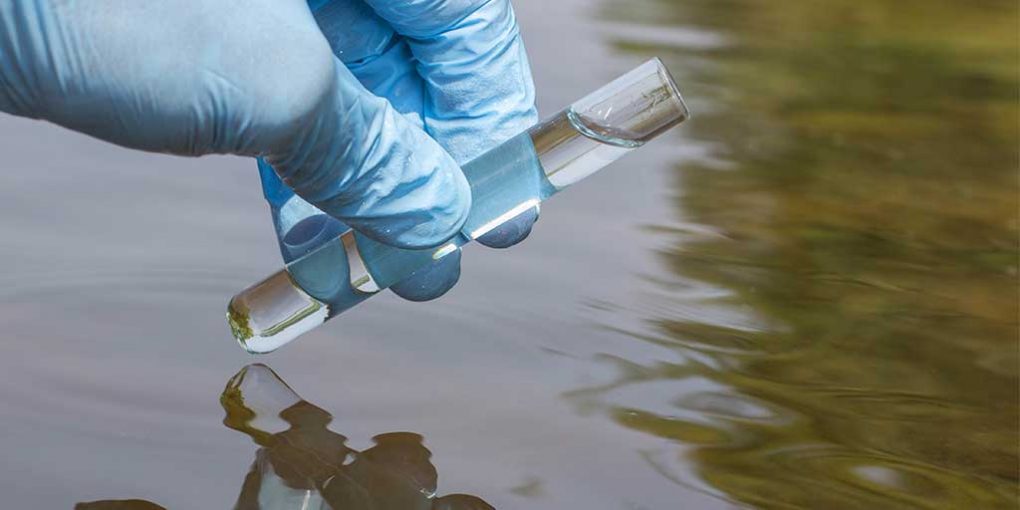Testing Ground Water Salinity: Methods and Importance
Groundwater is a vital resource for drinking, irrigation, and industrial uses. However, it can sometimes contain high levels of dissolved salts, leading to salinity, which impacts water quality and its suitability for various applications. Testing groundwater salinity is crucial to managing water resources effectively, protecting agriculture, and ensuring safe drinking water. This article will guide you through the importance of testing groundwater salinity, methods for testing, and how to interpret results.

Importance of Testing Groundwater Salinity
Salinity in groundwater can arise from natural processes such as the dissolution of minerals in the soil or human activities like irrigation, industrial waste, and over-extraction of groundwater. Excess salinity can:
- Affect Crop Yields:
High salinity reduces soil fertility, affecting plant growth and productivity.
- Corrode Infrastructure:
Saline water accelerates the corrosion of pipes, pumps, and other equipment used in water supply systems.
- Compromise Drinking Water:
High salinity can make water unfit for consumption, posing health risks, especially for individuals with high blood pressure or kidney problems.
- Alter Ecosystems:
Ecosystems dependent on freshwater may be damaged due to increased salinity, impacting biodiversity.
Methods for Testing Groundwater Salinity
Testing groundwater salinity is relatively simple and can be done using various methods, from basic field tools to laboratory analysis. The most common methods include:
- Electrical Conductivity (EC) Meter
This is one of the most widely used methods to measure groundwater salinity in the field. It works on the principle that saline water conducts electricity better than pure water.
How it works: The EC meter measures the ability of water to conduct electrical current, which directly correlates with the amount of dissolved salts (salinity) in the water.
Procedure: A sample of water is collected, and the EC probe is submerged in the sample. The reading is recorded in microSiemens per centimeter (µS/cm) or millisiemens per centimeter (mS/cm).
Advantages: Quick, cost-effective, and easy to use in the field.
Limitations: EC measurements provide a general estimate of salinity but do not specify the type of salts present.
- Total Dissolved Solids (TDS) Meter
TDS meters also measure salinity by estimating the concentration of dissolved solids in water, based on its electrical conductivity.
How it works: The meter uses a similar principle as the EC meter but directly converts the electrical conductivity reading into TDS values, usually expressed in parts per million (ppm).
Procedure: Similar to the EC meter, a water sample is collected and tested.
Advantages: Provides a quick estimate of overall salinity.
Limitations: TDS readings do not differentiate between the types of salts.
- Laboratory Analysis
For more precise and detailed results, laboratory testing of groundwater samples is recommended. Laboratories can determine not only the concentration of dissolved salts but also the specific types of salts present, such as sodium, chloride, calcium, and sulfate.
How it works: Water samples are collected and analyzed using techniques such as gravimetric analysis, ion chromatography, or atomic absorption spectroscopy.
Advantages: Accurate and detailed analysis, suitable for understanding the specific composition of groundwater.
Limitations: More time-consuming and expensive than field methods.
- Test Strips
For quick, low-cost testing, salinity test strips are an easy option, often used for spot-checking water quality.
How it works: A test strip is dipped into the water sample, and the color change indicates the salinity level.
Advantages: Affordable and easy to use.
Limitations: Less precise than meters or laboratory tests.

Interpreting Salinity Test Results
Once groundwater salinity has been measured, it is important to interpret the results to understand the water’s usability:
Freshwater: 0-500 ppm (or µS/cm EC) – Suitable for drinking and irrigation.
Slightly Saline Water: 500-1,500 ppm – May be suitable for irrigation, but may affect salt-sensitive crops.
Moderately Saline Water: 1,500-5,000 ppm – Marginal for irrigation, requires salt-tolerant crops, and may be unsuitable for drinking.
Highly Saline Water: 5,000-10,000 ppm – Generally unsuitable for drinking and most irrigation purposes.
Very Highly Saline Water: Above 10,000 ppm – Used mainly for industrial purposes; unsuitable for agriculture or human consumption.

Conclusion
Testing groundwater salinity is essential for ensuring the quality and usability of this critical resource. Regular monitoring and taking corrective actions when necessary can prevent the adverse effects of high salinity on agriculture, human health, and infrastructure. Whether using basic field tools like EC and TDS meters or opting for detailed laboratory analysis, keeping groundwater salinity in check ensures sustainable water management for present and future generations.
